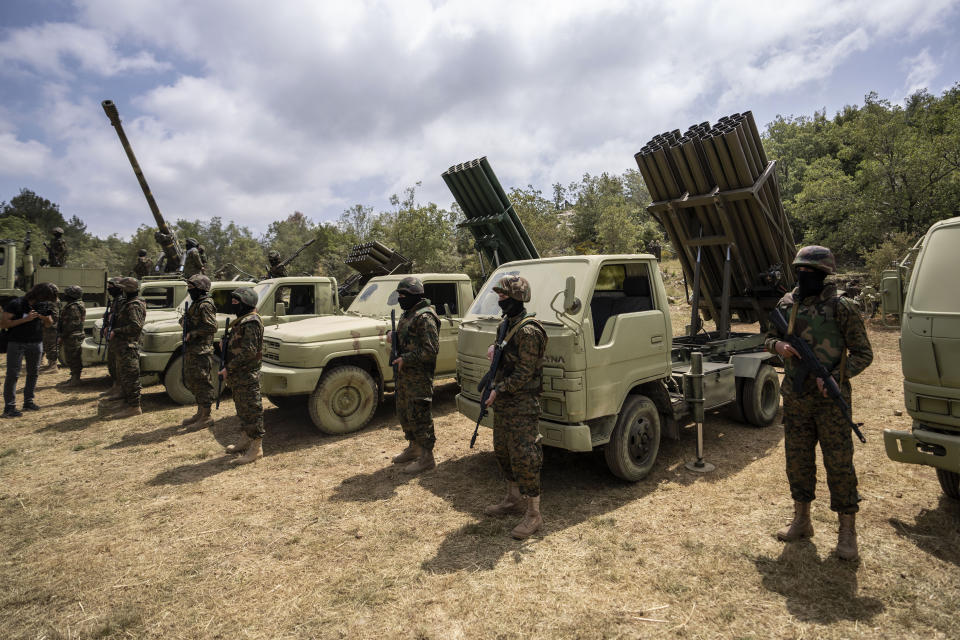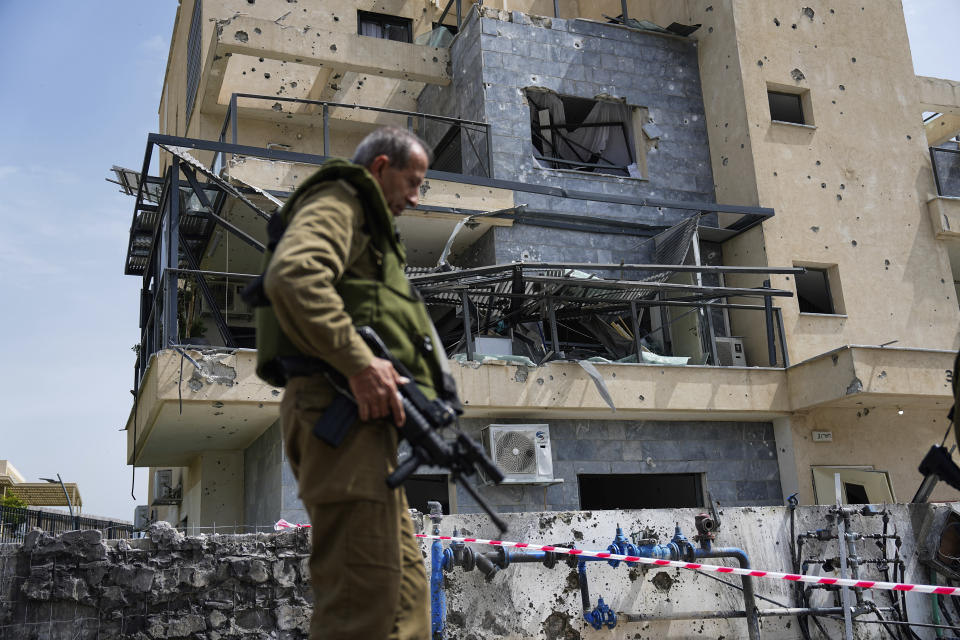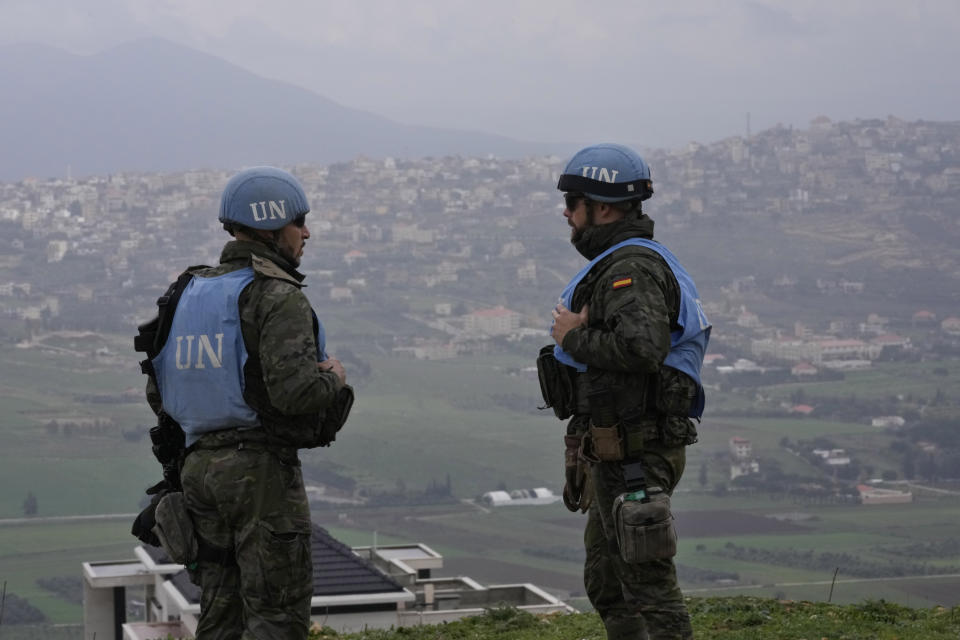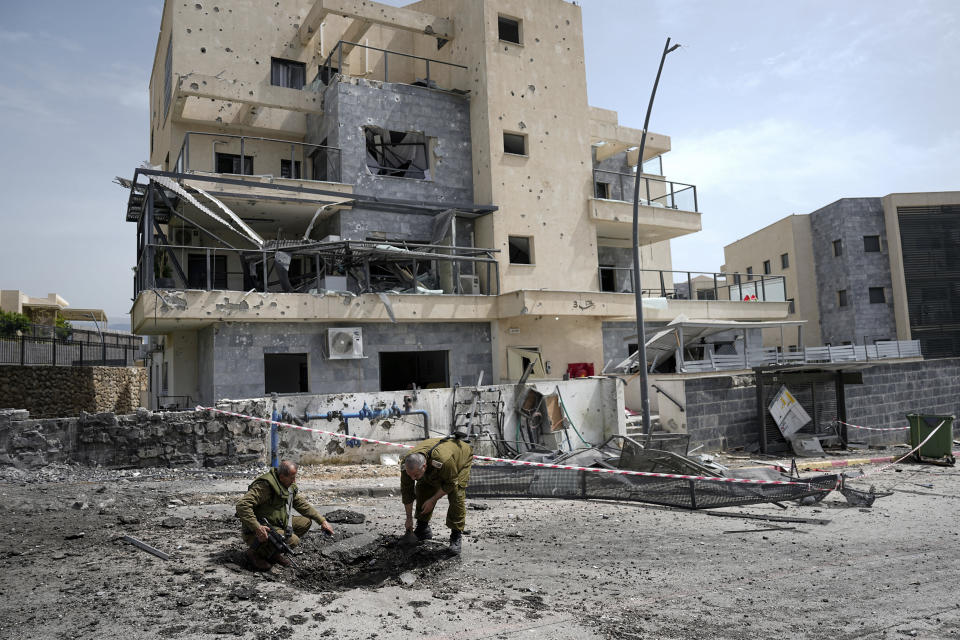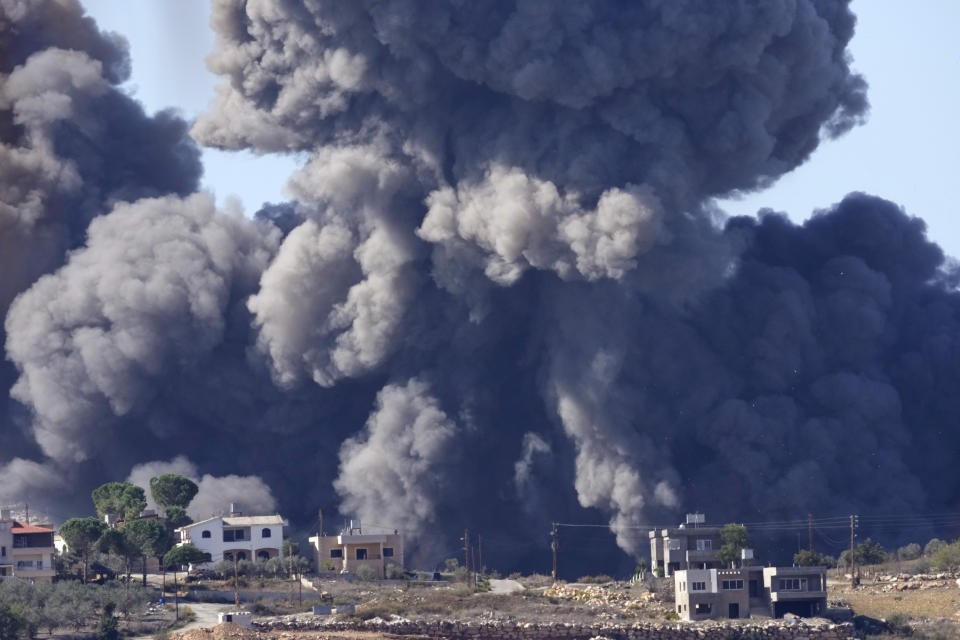With another setback for cease-fire talks, worries of full-scale war for Israel and Lebanon escalate
BEIRUT (AP) — The prospect of a full-scale war between Israel and Lebanon’s Hezbollah militant group terrifies people on both sides of the border, but some see it as an inevitable fallout from Israel’s ongoing war against Hamas in Gaza, particularly as cease-fire negotiations have faltered.
Such a war could be the most destructive either side has ever experienced.
Israel and Hezbollah each have lessons from their last war, in 2006, a monthlong conflict that ended in a draw. They’ve also had nearly nine months to prepare for another war, even as the United States tries to prevent a widening of the conflict that could spark a confrontation with Iran and endanger U.S. forces in the region.
Here’s a look at each side’s preparedness, how war might unfold and what’s being done to prevent it.
What happened in 2006?
The 2006 war, six years after Israeli forces that had occupied southern Lebanon withdrew, erupted after Hezbollah captured two Israeli soldiers and killed several others in a cross-border raid.
Israel launched a full-scale air and ground offensive and imposed a blockade that aimed to free the hostages and destroy Hezbollah’s military capabilities — a mission that ultimately failed.
Israeli bombing leveled large swaths of south Lebanon and Beirut’s southern suburbs. Hezbollah fired thousands of unguided rockets into northern Israel communities.
The conflict killed some 1,200 Lebanese, mostly civilians, and 160 Israelis, mostly soldiers.
A United Nations resolution ending the war called for withdrawal of Israeli forces from Lebanon and a demilitarized zone on Lebanon’s side of the border.
Despite the deployment of U.N. peacekeepers, Hezbollah continues to operate in the border area, while Lebanon says Israel regularly violates its airspace and continues to occupy pockets of Lebanese land.
How probable is war?
An Israel-Hezbollah war could be “a catastrophe that goes far beyond the border, and frankly, beyond imagination,” U.N. Secretary-General Antonio Guterres warned last week, amid rising rhetoric and fears of a conflict.
Iran-backed Hezbollah initially seemed caught off-guard by Hamas’ Oct. 7 attack on Israel, a regional ally, but began firing rockets into northern Israel the following day. Since then, Hezbollah and Israel have exchanged near-daily cross-border strikes, escalating gradually. Israel also carried out targeted killings of Hezbollah and Hamas figures in Lebanon.
More than 450 people, mostly fighters with Hezbollah and allied groups but also more than 80 civilians and noncombatants, have been killed on Lebanon’s side, and 16 soldiers and 11 civilians on Israel’s.
Tens of thousands have been displaced on both sides. There are no immediate prospects for their return.
Last week, the Israeli army said it has “approved and validated” plans for an offensive in Lebanon, although the decision to launch such an operation would have to come from the country’s political leadership.
Hezbollah has released surveillance drone videos showing sites in Israel with the words “Whoever thinks of war against us will regret it.” And the group's leader, Hassan Nasrallah, has warned of a fight “without limits” if Israel does.
Hezbollah says it won’t agree to a cease-fire on the Israel-Lebanon border before there’s one in Gaza, a prospect that looks increasingly unlikely.
How prepared are they?
Both Hezbollah and the Israeli military have expanded capabilities since 2006 — yet both countries are also more fragile.
In Lebanon, more than four years of economic crisis have crippled public institutions, including its army and electrical grid, and eroded its health system. The country hosts more than 1 million Syrian refugees.
Lebanon adopted an emergency plan for a war scenario in late October. It projected the forcible displacement of 1 million Lebanese for 45 days.
More than 95,000 Lebanese are displaced from the border area now, according to the International Organization for Migration. The government has said it will compensate those who lost their homes, but it's unclear where the money will come from.
Hezbollah has provided modest stipends to many of the displaced, but the response has largely fallen to cash-strapped municipalities.
Local and international nongovernmental organizations and religious charities have picked up some of the slack, but their resources are also strained.
Some have stockpiled supplies such as backup fuel and medical equipment in anticipation of blockades and shortages should war break out.
Israel is feeling economic and social strain from the war in Gaza, which is expected to cost over $50 billion, or about 10 percent of national economic activity through the end of 2024, according to the Bank of Israel. Costs would rise sharply if there’s war with Lebanon.
Israel has evacuated 60,000 residents from towns nearest the border, where there’s no warning time for rocket launches because of the proximity of Hezbollah squads.
In a war with Hezbollah, there would be no point in additional evacuations since the militia’s rockets and missiles can reach all of Israel.
How would war play out?
A full-scale war would likely spread to multiple fronts, escalating the involvement of Iranian proxies in Syria, Iraq and Yemen — and perhaps draw in Iran itself.
It could also drag the U.S., Israel’s closest ally, deeper into the conflict.
Hezbollah has 150,000 to 200,000 rockets and missiles of various ranges, said Orna Mizrahi of the Israeli think tank Institute for National Security Studies. This arsenal is at least five times larger than that of Hamas and far more accurate, she said.
The militia’s guided projectiles could reach water, electricity or communications facilities, and densely populated residential areas.
In Lebanon, airstrikes would likely wreak havoc on infrastructure and potentially kill thousands. Israeli Prime Minister Benjamin Netanyahu has threatened to “turn Beirut into Gaza,” where Israel’s air and ground incursion has caused widespread destruction and killed more than 37,000 Palestinians, according to Gaza’s Health Ministry.
Israel is far more protected, with several air defense systems, including the Iron Dome, which intercepts rockets with a roughly 90% success rate. But it can get overwhelmed if a mass barrage of rockets is fired.
Some 40% of Israel’s population live in newer homes with private safe rooms fortified with blast protection to withstand rocket attacks. Israel also has a network of bomb shelters, but a 2020 government report says about one-third of Israelis lack easy access to them.
Lebanon has no such network, and shelters would be of little use against massive “bunker buster” bombs Israel has dropped in some parts of Gaza. The U.S. has halted some shipments of those bombs since May out of concern over civilian casualties.
Hezbollah has limited air defenses, while those of the Lebanese army are outdated and insufficient because of budget shortfalls.
The Lebanese army has remained on the sidelines since Oct. 7. In 2006, it entered fighting in a limited capacity, but it’s unclear how it would react in the event of a new Israel-Hezbollah war.
___
Lidman reported from Tel Aviv, Israel.

 Yahoo News
Yahoo News 